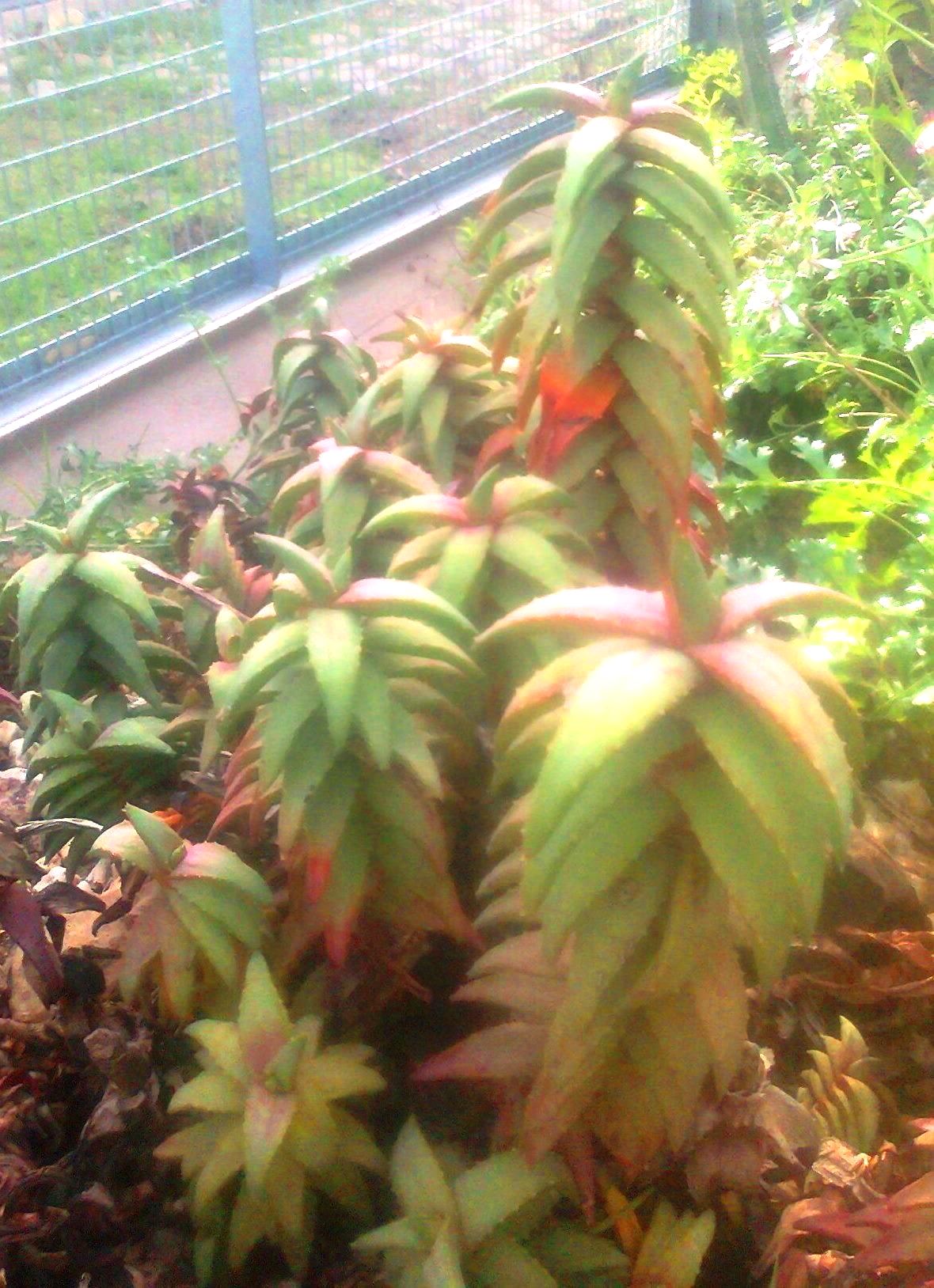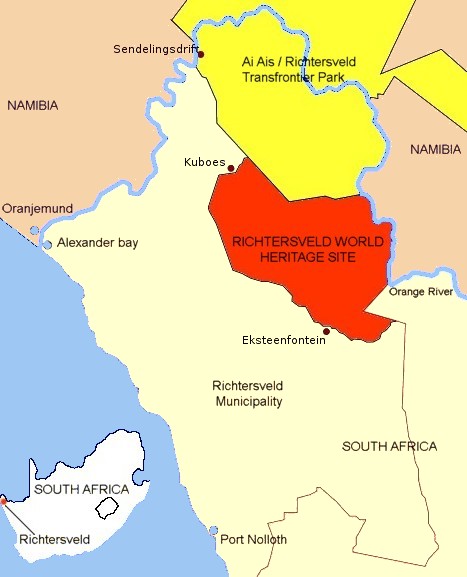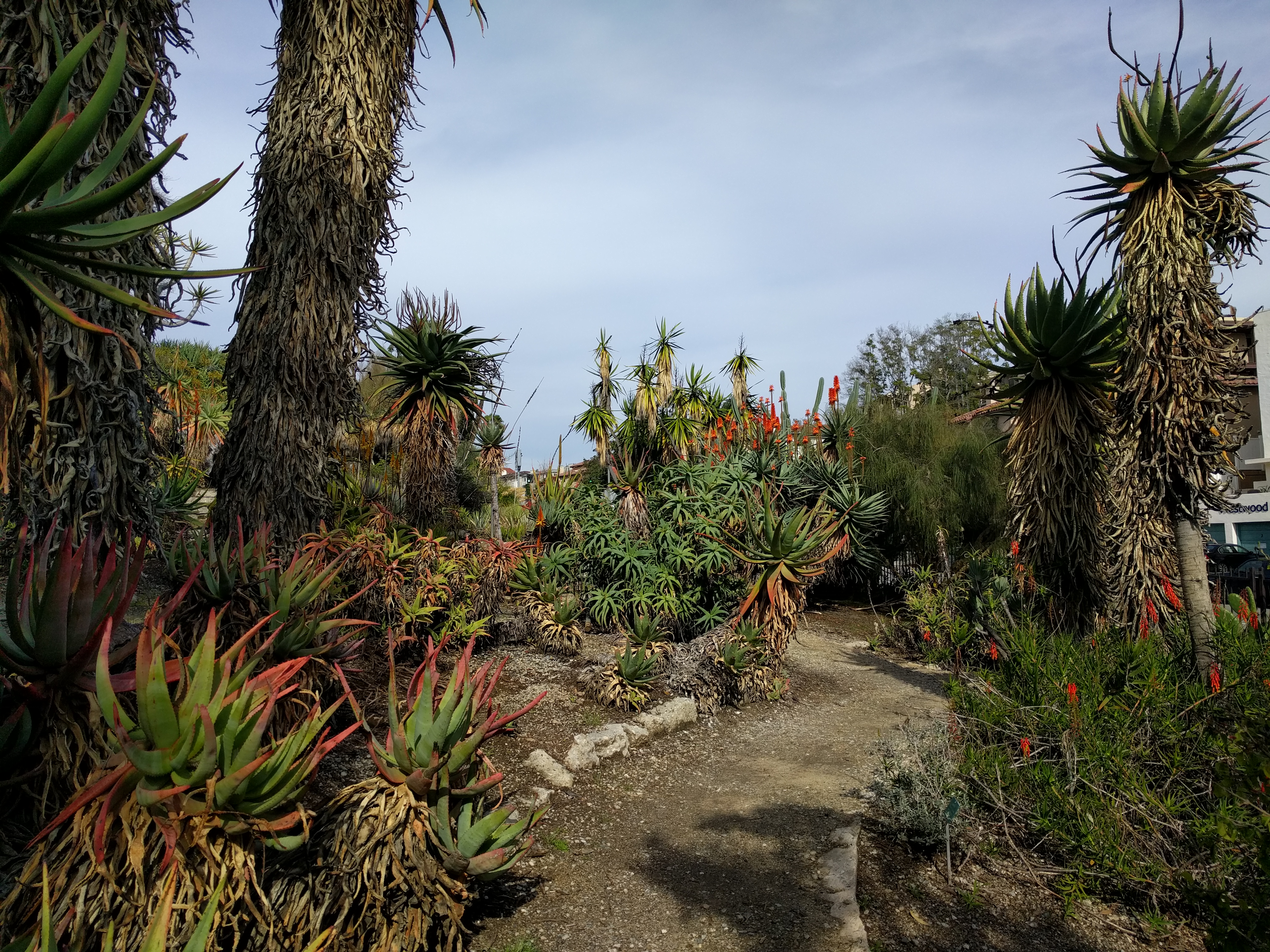|
Aloe Pearsonii
''Aloe pearsonii'' (Pearson's Aloe) is a very distinctive and unusual species of aloe, that is naturally endemic to the arid Richtersveld area on the border between South Africa and Namibia. Naming and classification ''Aloe pearsonii'' is often considered part of a group of southern African "Creeping Aloes" ('' Mitriformes'') together with closely related species ''Aloe perfoliata'', '' Aloe arenicola'', '' Aloe meyeri'' and '' Aloe dabenorisana''. However, other botanists believe it to be closer to the "Climbing Aloes" ('' Macrifoliae''). This unusual plant would be an outlier whichever series it was classified into, and is probably a "missing-link" intermediate between the two series. The name ''"pearsonii"'' remembers the botanist and first director of the South African National Botanical Institute, Professor Pearson. Appearance This aloe grows a clump of rigidly erect stems, that are covered in four highly symmetrical rows of thick re-curved leaves. In the dryer months the ... [...More Info...] [...Related Items...] OR: [Wikipedia] [Google] [Baidu] |
Schönland
Selmar Schonland (15 August 1860 – 22 April 1940), originally spelt ''Schönland'', the founder of the Department of Botany at Rhodes University, was a German immigrant, who came to the Eastern part of the Cape Colony in 1889 to take up an appointment as curator of the Albany Museum. He came to Grahamstown via a doctorate at the University of Hamburg and a post at Oxford University (1886–1889 as curator of the Fielding Herbarium and a lecturer in Botany). Working under Prof. Sir Isaac Bayley Balfour and Prof. Sydney Howard Vines, he developed an interest in the family ''Crassulaceae'' and contributed an account of this group to Engler & Prantl's ''Natürl. Pflanzenfamilien''. While at Oxford, he translated, with Edward Bagnall Poulton and Arthur Shipley, August Weismann's "Essays upon Heredity and Kindred Biological Problems". Coming to the museum in Grahamstown gave him the opportunity to broaden his interests and develop the second largest herbarium in South Africa which ... [...More Info...] [...Related Items...] OR: [Wikipedia] [Google] [Baidu] |
Aloe
''Aloe'' (; also written ''Aloë'') is a genus containing over 650 species of flowering succulent plants.WFO (2022): Aloe L. Published on the Internet;http://www.worldfloraonline.org/taxon/wfo-4000001341. Accessed on: 06 Nov 2022 The most widely known species is '' Aloe vera'', or "true aloe". It is called this because it is cultivated as the standard source for assorted pharmaceutical purposes. Other species, such as ''Aloe ferox'', are also cultivated or harvested from the wild for similar applications. The APG IV system (2016) places the genus in the family Asphodelaceae, subfamily Asphodeloideae. Within the subfamily it may be placed in the tribe Aloeae.Stevens, P.F. (2001 onwards).Asphodelaceae. ''Angiosperm Phylogeny Website''. Retrieved 2016-06-09. In the past, it has been assigned to the family Aloaceae (now included in the Asphodeloidae) or to a broadly circumscribed family Liliaceae (the lily family). The plant ''Agave americana'', which is sometimes called "Americ ... [...More Info...] [...Related Items...] OR: [Wikipedia] [Google] [Baidu] |
Endemism
Endemism is the state of a species being found in a single defined geographic location, such as an island, state, nation, country or other defined zone; organisms that are indigenous to a place are not endemic to it if they are also found elsewhere. For example, the Cape sugarbird is found exclusively in southwestern South Africa and is therefore said to be ''endemic'' to that particular part of the world. An endemic species can be also be referred to as an ''endemism'' or in scientific literature as an ''endemite''. For example '' Cytisus aeolicus'' is an endemite of the Italian flora. '' Adzharia renschi'' was once believed to be an endemite of the Caucasus, but it was later discovered to be a non-indigenous species from South America belonging to a different genus. The extreme opposite of an endemic species is one with a cosmopolitan distribution, having a global or widespread range. A rare alternative term for a species that is endemic is "precinctive", which applies to ... [...More Info...] [...Related Items...] OR: [Wikipedia] [Google] [Baidu] |
Richtersveld
The Richtersveld is a desert landscape characterised by rugged kloofs and high mountains, situated in the north-western corner of South Africa’s Northern Cape province. It is full of changing scenery from flat, sandy, coastal plains, to craggy sharp mountains of volcanic rock and the lushness of the Orange River, which forms the border with neighboring Namibia. The area ranges in altitude from sea level, to at Cornellberg. Located in the north-western side of the Northern Cape province in South Africa, the Richtersveld is regarded as the only arid biodiversity hotspot on earth and the majority of the area is inscribed on UNESCO's World Heritage List due to its cultural values. The Nama people of Richtersveld claimed title to their traditional land and set aside this conservancy for future research and tourism. The northern part of the area was proclaimed in 1991 after 18 years of negotiations between the National Parks Board and the local Nama people who continue to liv ... [...More Info...] [...Related Items...] OR: [Wikipedia] [Google] [Baidu] |
South Africa
South Africa, officially the Republic of South Africa (RSA), is the southernmost country in Africa. It is bounded to the south by of coastline that stretch along the South Atlantic and Indian Oceans; to the north by the neighbouring countries of Namibia, Botswana, and Zimbabwe; and to the east and northeast by Mozambique and Eswatini. It also completely enclaves the country Lesotho. It is the southernmost country on the mainland of the Old World, and the second-most populous country located entirely south of the equator, after Tanzania. South Africa is a biodiversity hotspot, with unique biomes, plant and animal life. With over 60 million people, the country is the world's 24th-most populous nation and covers an area of . South Africa has three capital cities, with the executive, judicial and legislative branches of government based in Pretoria, Bloemfontein, and Cape Town respectively. The largest city is Johannesburg. About 80% of the population are Black South Afri ... [...More Info...] [...Related Items...] OR: [Wikipedia] [Google] [Baidu] |
Namibia
Namibia (, ), officially the Republic of Namibia, is a country in Southern Africa. Its western border is the Atlantic Ocean. It shares land borders with Zambia and Angola to the north, Botswana to the east and South Africa to the south and east. Although Kazungula, it does not border Zimbabwe, less than 200 metres (660 feet) of the Botswanan right bank of the Zambezi, Zambezi River separates the two countries. Namibia gained independence from South Africa on 21 March 1990, following the Namibian War of Independence. Its capital and largest city is Windhoek. Namibia is a member state of the United Nations (UN), the Southern African Development Community (SADC), the African Union (AU) and the Commonwealth of Nations. The driest country in sub-Saharan Africa, Namibia has been inhabited since pre-historic times by the San people, San, Damara people, Damara and Nama people. Around the 14th century, immigration, immigrating Bantu peoples arrived as part of the Bantu expansion. Since ... [...More Info...] [...Related Items...] OR: [Wikipedia] [Google] [Baidu] |
Aloe Ser
''Aloe'' (; also written ''Aloë'') is a genus containing over 650 species of flowering succulent plants.WFO (2022): Aloe L. Published on the Internet;http://www.worldfloraonline.org/taxon/wfo-4000001341. Accessed on: 06 Nov 2022 The most widely known species is ''Aloe vera'', or "true aloe". It is called this because it is cultivated as the standard source for assorted pharmaceutical purposes. Other species, such as ''Aloe ferox'', are also cultivated or harvested from the wild for similar applications. The APG IV system (2016) places the genus in the family Asphodelaceae, subfamily Asphodeloideae. Within the subfamily it may be placed in the tribe Aloeae.Stevens, P.F. (2001 onwards).Asphodelaceae. ''Angiosperm Phylogeny Website''. Retrieved 2016-06-09. In the past, it has been assigned to the family Aloaceae (now included in the Asphodeloidae) or to a broadly circumscribed family Liliaceae (the lily family). The plant ''Agave americana'', which is sometimes called "American ... [...More Info...] [...Related Items...] OR: [Wikipedia] [Google] [Baidu] |
Aloe Perfoliata
''Aloe perfoliata'', the rubble aloe or mitre aloe, is a hardy creeping aloe, found in rocky, mountainous areas throughout the Western Cape, South Africa. Naming and classification ''Aloe perfoliata'' was formerly known as ''Aloe mitriformis''. The physical appearance of this aloe varies greatly depending on environment, and consequently various sub-populations have previously often been mistaken for being separate species. The South African National Biodiversity Institute now recognizes that these are all members of the same species, ''Aloe perfoliata'', comprising what were previously known as ''Aloe mitriformis'', ''Aloe distans'', ''Aloe comptonii'', ''Aloe albispina'' and ''Aloe flavispina'' among others. This species is the most widespread of a group of closely related "Creeping Aloes" ('' Mitriformes''), including the cliff-hanging aloes ''A. meyeri'' and ''A. dabenorisana''(stemless), as well as spotted '' Aloe arenicola'' of the South African west coast and the unusual ... [...More Info...] [...Related Items...] OR: [Wikipedia] [Google] [Baidu] |
Aloe Arenicola
''Aloe arenicola'' (the sand aloe or Bont-Ot'korrie) is a spotted creeping aloe, indigenous to the arid west coast of South Africa. Distribution The name ''"arenicola"'' means "inhabitant of sands" in Latin, as this tough aloe is naturally restricted to the sandy dune areas that run in a narrow strip along the South African west coast, from Lamberts Bay in the south, up to the Namibian border in the north. This coastal strip lies within the Namaqualand, an arid winter-rainfall area. During the severest droughts, the plants get all the moisture they require from the mists that sweep up from the sea. Adapted as they are for arid, sandy, winter-rainfall desert, their roots and stems tend to rot when they are propagated in wet climates. Nonetheless, the distinctive colour and markings of this aloe have made it a popular ornamental in xeriscaping and it is widely grown for dry gardens. Appearance This aloe is a dark blue-green colour with narrow leaves that are covered in small whi ... [...More Info...] [...Related Items...] OR: [Wikipedia] [Google] [Baidu] |
Aloe Meyeri
''Aloe meyeri'' is a succulent plant species from South Africa. The species was first formally described by Ernst Jacobus van Jaarsveld in 1981.https://www.wikidata.org/wiki/Q1484451 References External links 'Aloe meyeri' The Plant List 'Aloe meyeri' Encyclopedia of Life meyeri {{Asphodelaceae-stub ... [...More Info...] [...Related Items...] OR: [Wikipedia] [Google] [Baidu] |
Aloe Dabenorisana
''Aloe'' (; also written ''Aloë'') is a genus containing over 650 species of flowering succulent plants.WFO (2022): Aloe L. Published on the Internet;http://www.worldfloraonline.org/taxon/wfo-4000001341. Accessed on: 06 Nov 2022 The most widely known species is ''Aloe vera'', or "true aloe". It is called this because it is cultivated as the standard source for assorted pharmaceutical purposes. Other species, such as ''Aloe ferox'', are also cultivated or harvested from the wild for similar applications. The APG IV system (2016) places the genus in the family Asphodelaceae, subfamily Asphodeloideae. Within the subfamily it may be placed in the tribe Aloeae.Stevens, P.F. (2001 onwards).Asphodelaceae. ''Angiosperm Phylogeny Website''. Retrieved 2016-06-09. In the past, it has been assigned to the family Aloaceae (now included in the Asphodeloidae) or to a broadly circumscribed family Liliaceae (the lily family). The plant ''Agave americana'', which is sometimes called "American ... [...More Info...] [...Related Items...] OR: [Wikipedia] [Google] [Baidu] |
Z Aloe Pearsonii - Stellenbosch Botanical Gardens 2
Z (or z) is the 26th and last letter of the Latin alphabet, used in the modern English alphabet, the alphabets of other western European languages and others worldwide. Its usual names in English are ''zed'' () and ''zee'' (), with an occasional archaic variant ''izzard'' ()."Z", ''Oxford English Dictionary,'' 2nd edition (1989); ''Merriam-Webster's Third New International Dictionary of the English Language, Unabridged'' (1993); "zee", ''op. cit''. Name and pronunciation In most English-speaking countries, including Australia, Canada, India, Ireland, New Zealand and the United Kingdom, the letter's name is ''zed'' , reflecting its derivation from the Greek ''zeta'' (this dates to Latin, which borrowed Y and Z from Greek), but in American English its name is ''zee'' , analogous to the names for B, C, D, etc., and deriving from a late 17th-century English dialectal form. Another English dialectal form is ''izzard'' . This dates from the mid-18th century and probably derives fr ... [...More Info...] [...Related Items...] OR: [Wikipedia] [Google] [Baidu] |


.jpg)


.jpg)
